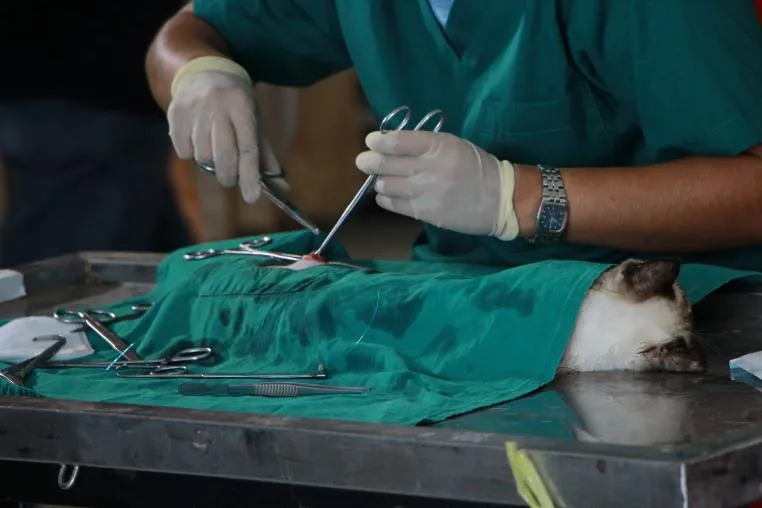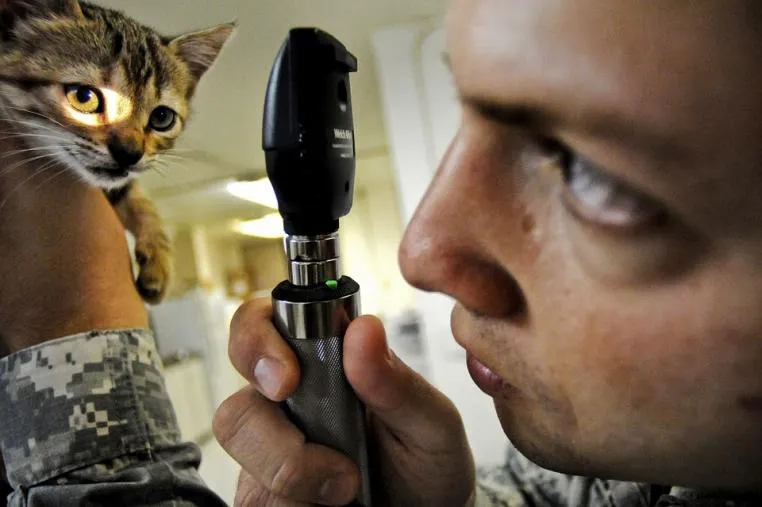These tools, devices and technologies allow vets to provide stellar, efficient medical care to pet-patients and must not be overlooked when putting together your clinic equipment purchase list. Here’s a list of some of the most essential veterinary equipment any new vet clinic must have.
Exam and procedure tables
To best be able to examine and treat your pet-patients, you’re going to need veterinary tables in each treatment room. Depending on your clinic’s unique needs and requirements, you can choose from v-top tables, electric & hydraulic tables, or lift tables, all of which enable stability, mobility and versatility while in use. The surface of these exam and procedure tables can be flexibly adjusted to accommodate each pet-patient’s size and girth and can be positioned for optimal access to the area under examination. And unlike standard surfaces, these tables are designed for routine cleaning and disinfecting.

Lighting
As a vet, you will need maximum visibility of your pet-patient’s body, to be able to accurately diagnose ailments, repair physical damage and provide precise treatment. Luckily, there are many lighting options designed specifically for vet clinics. You can choose from large, bright surgical lights, smaller, more concentrated exam lights, headlights and a wide variety of handheld diagnostic lights that meet your practice - and its budget’s needs.
Veterinary stethoscope
Stethoscopes are standard tools for medical professionals of all fields, but vets need to acquire specific veterinary stethoscopes for their practices. This purchase is essential, as veterinary stethoscopes allow you to bypass all that fur and animal muscle and actually hear the heart and lung sounds of any animal, big or small, thanks to their specially designed acoustic cups. This tool may be small, lightweight and highly portable, but it is nonetheless a crucial purchase for any vet, one you likely already have from vet school or from working as an associate at another vet’s clinic, but may be looking to upgrade - or acquire more of, for your own practice.
Veterinary ultrasounds
Diagnostic imaging is used by veterinarians to see precise images inside their pet-patient’s body and make accurate diagnoses, which lead to speedy, effective treatment. As such, vets need top-tier diagnostic imaging, equipment, such as veterinary ultrasounds, which use sound waves to scan and present internal images of an animal’s body, around at all times. New, innovative, real-time ultrasound equipment with external cameras significantly reduces exam time while producing deeper and wider crisp images of abdominal, cardiac, musculoskeletal, vascular and other bodily systems. These images can even be shared live via telemedicine with a sonographer, for richer real-time guidance, with far less diagnostic guesswork involved.
If your practice involves making house calls, a portable veterinary ultrasound scanner will enable you to obtain real-time results of any animal’s condition, regardless of their physical location. That way, even if your pet-patient is large and lives in a remote, rural area lacking a full-service clinic, you can still make quick, evidence-based decisions on their conditions and provide life-saving medical treatment. This is particularly helpful when examining pregnant farm animals during breeding season.
Digital x-ray imaging machines
Digital radiology or radiography (DR) technology enables veterinarians to quickly and accurately obtain clear images of your pet-patient’s bones, muscles and internal organs, without requiring the use of film, chemicals of darkroom processing.The precise, digital images can be enhanced, enlarged and focused, which ultimately leads to fewer retakes and more accurate diagnoses. The images obtained can be saved to a digital database, and easily shared with other vets and consultants, with the click of a button. This means that animals can spend less time under anesthesia and on the examining table and more time back at home, resting and recovering from their particular condition. As such, digital x-rays have become a huge, essential and highly common part of many veterinary practices around the world. There are various types of DR systems, each relying of different technologies to obtain digital images. You can select the DR system that best suits your practice’s needs and budget.

Anesthesia machines
Getting your pet-patients to stay still during scans, invasive exams and procedures can be a challenge - and you don’t want them to suffer from the pain of their injuries, surgeries or other treatment protocols. This is why high-quality veterinary anesthesia machines are on the top of the veterinary equipment must-have list. Anesthesia is often used on dogs, cats, birds and other animals, but because their dispositions vary greatly and significantly differ from those of humans, specialized veterinary anesthesia equipment that is 100 percent safe for animal use is required. You can’t just use the same machines doctors use on humans. Anesthetic equipment at a veterinary practice ensure animals receive adequate oxygen, ventilation and breathing while under anesthesia and mix the anesthetics properly according to predetermined concentrations, through a mostly automated process that minimizes risk to the patient.
IV pumps
Almost all veterinary clinics use IV pumps to administer fluids, drugs and other supplements during surgeries and other treatments. IV pumps are the preferred method for controlling the delivery of a constant rate infusion (CRI) of the substance to be provided to the patient, for a consistent or time-dependent effect. This is particularly critical when the medication administered has potentially potent or adverse clinical effects. And while there are cheaper IV flow-control devices on the market, pumps are multi-use, non-disposable, readily available and more cost-effective in the long-term.
Autoclaves and sterilizers
It goes without saying, vets must ensure proper sterilization of their medical tools at all times. This is absolutely essential for safe, contamination-free work, but also has the added benefit of extending the life of commonly used instruments, which can otherwise be worn down by organic fluids and harsh chemicals, solvents and cleaners. Autoclave steam sterilization helps ensure that vet tools are satisfactorily disinfected and sterilized, for optimal pet-patient outcomes. Autoclaves come in various sizes. If you are running a high-volume clinic, you may opt to purchase a larger unit to increase efficiency, instead of keeping your autoclave on all day. You may also want to look into buying an automatic or digital autoclave, which enables faster turn-around than its manual version.
Tuttnauer - Makers of top sterilization and infection control tools for vets
Tuttnauer is an autoclave sterilizer and plasma sterilizer manufacturer, and a provider of washer disinfectors and other infection control products in the Healthcare and Life Science industries, which now includes veterinary practices. Our tvet veterinary autoclaves were developed specifically for vet practices. They meet all your sterilization needs by creating cycle parameters to accommodate double wrapped pouches. These cycles ensure sterility and efficient drying of packs and pouches, helping veterinarians meet today’s challenging workloads and provide superior pet-patient care, without risking infection contamination.
When setting up your vet clinic, there are tons of tools and tech you’ll need to acquire, including many not listed above, such as electrosurgical units, defibrillators, microscopes - even calculators. But whatever equipment you do purchase, you’re going to want to ensure they are high-quality, durable and infection-free.
For more information and to inquire about purchasing a vet veterinary autoclave for your vet practice, visit Tuttnauer's line of Animal Care Autoclaves.